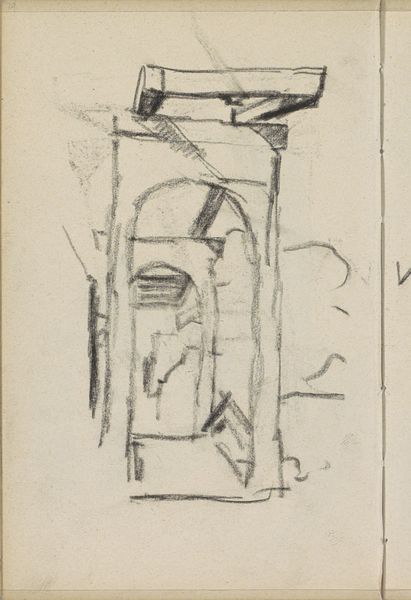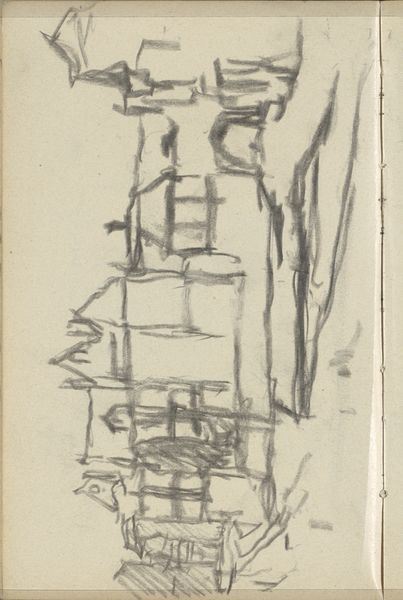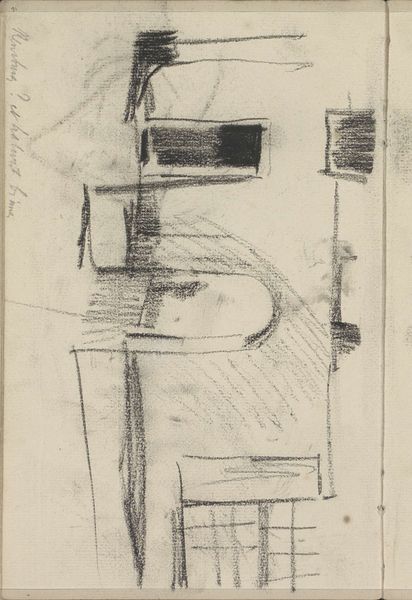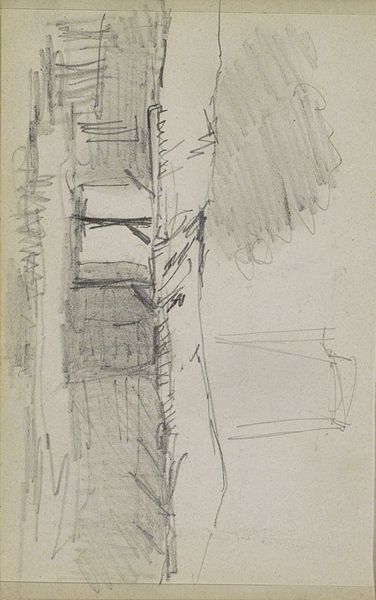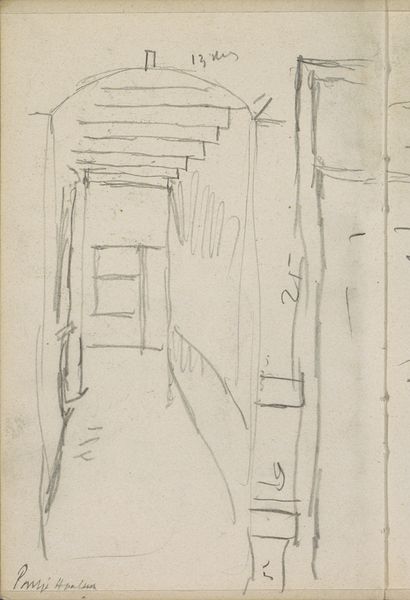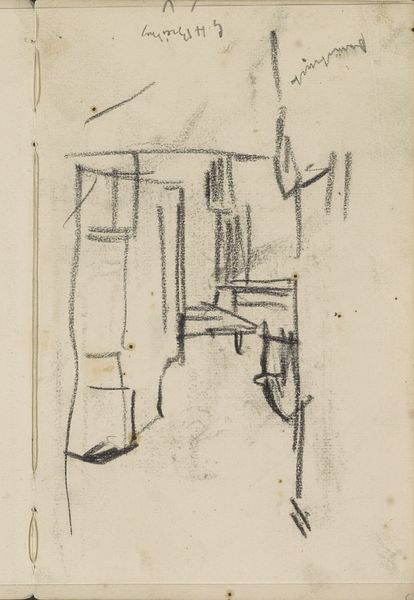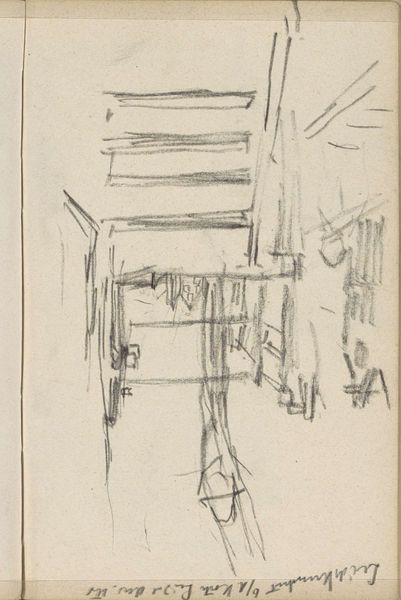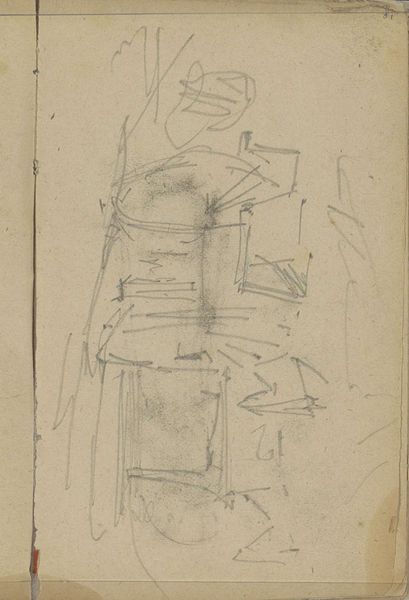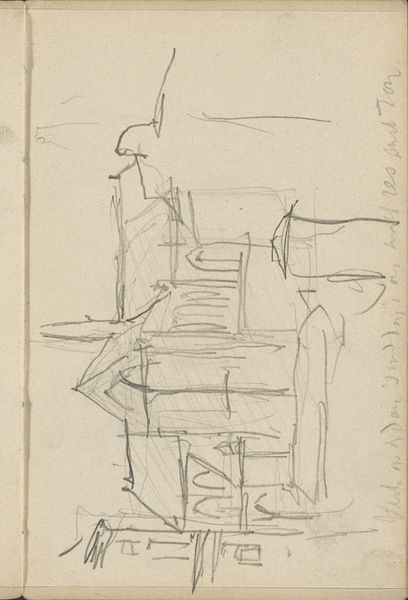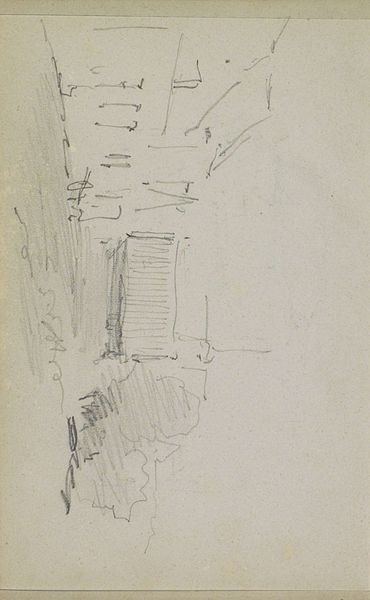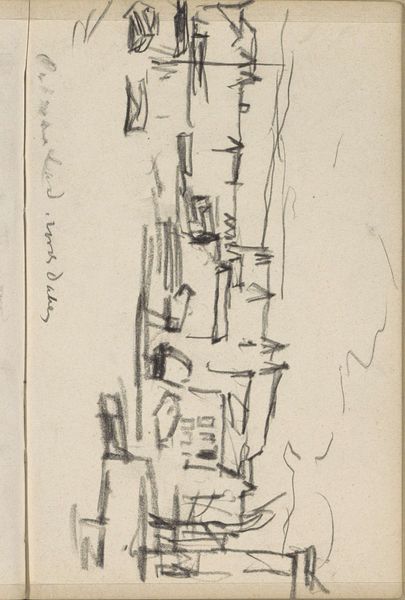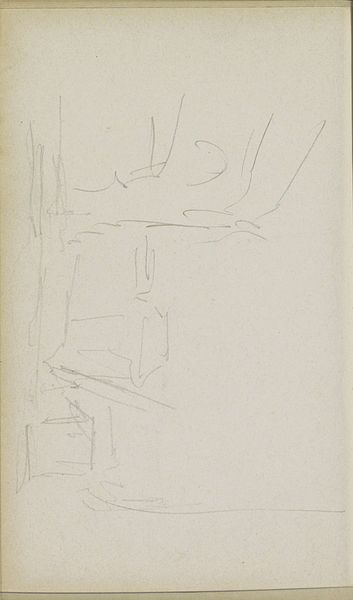
Gezicht op de Sloterdijkbrug te Amsterdam Possibly 1907 - 1911
0:00
0:00
Copyright: Rijks Museum: Open Domain
Curator: Welcome. We’re looking at George Hendrik Breitner’s "Gezicht op de Sloterdijkbrug te Amsterdam," or "View of the Sloterdijk Bridge in Amsterdam." It’s a pencil drawing, made sometime between 1907 and 1911, now held at the Rijksmuseum. Editor: It's evocative, even with such a minimal approach. I find a certain melancholy in the starkness of the sketch—almost as though the bridge is a ruin, something crumbling. Curator: Breitner's sketch uses simple, gestural lines to construct the bridge. Notice how the solidity is implied rather than explicitly drawn, relying on suggestion. The structural form is hinted at through the barest application of graphite on paper. Editor: Bridges have long been potent symbols, culturally speaking. They signify connection, transition, the crossing of divides both literal and figurative. Was this location, the Sloterdijk Bridge, a notable crossing in Amsterdam's history or collective imagination, I wonder? Did Breitner intend some deeper narrative here? Curator: It's hard to be certain of Breitner’s intent without more documentary evidence, but formally, the drawing exemplifies a type of fragmented, impressionistic aesthetic. Look at how the pencilwork catches the light; shadow creates depth and volume from essentially nothing, activating the surface of the page. Editor: You’re right, it’s an activating image, despite its seeming simplicity. There’s a haunting quality, almost a visual lament. One thinks of the relentless pace of modernity transforming the old world... bridges, of course, facilitate such progress. But this skeletal bridge seems more a vestige of what was. Curator: Or perhaps he’s highlighting the skeletal structure as its core identity? Breitner simplifies to extract the primary elements, using line to build and deconstruct simultaneously, reflecting dynamism of urbanism. Editor: A useful way to perceive it. Well, on this bridging note of interpretation, perhaps it’s time we guide listeners onward. Curator: Indeed. Thank you for helping the image come alive.
Comments
No comments
Be the first to comment and join the conversation on the ultimate creative platform.
